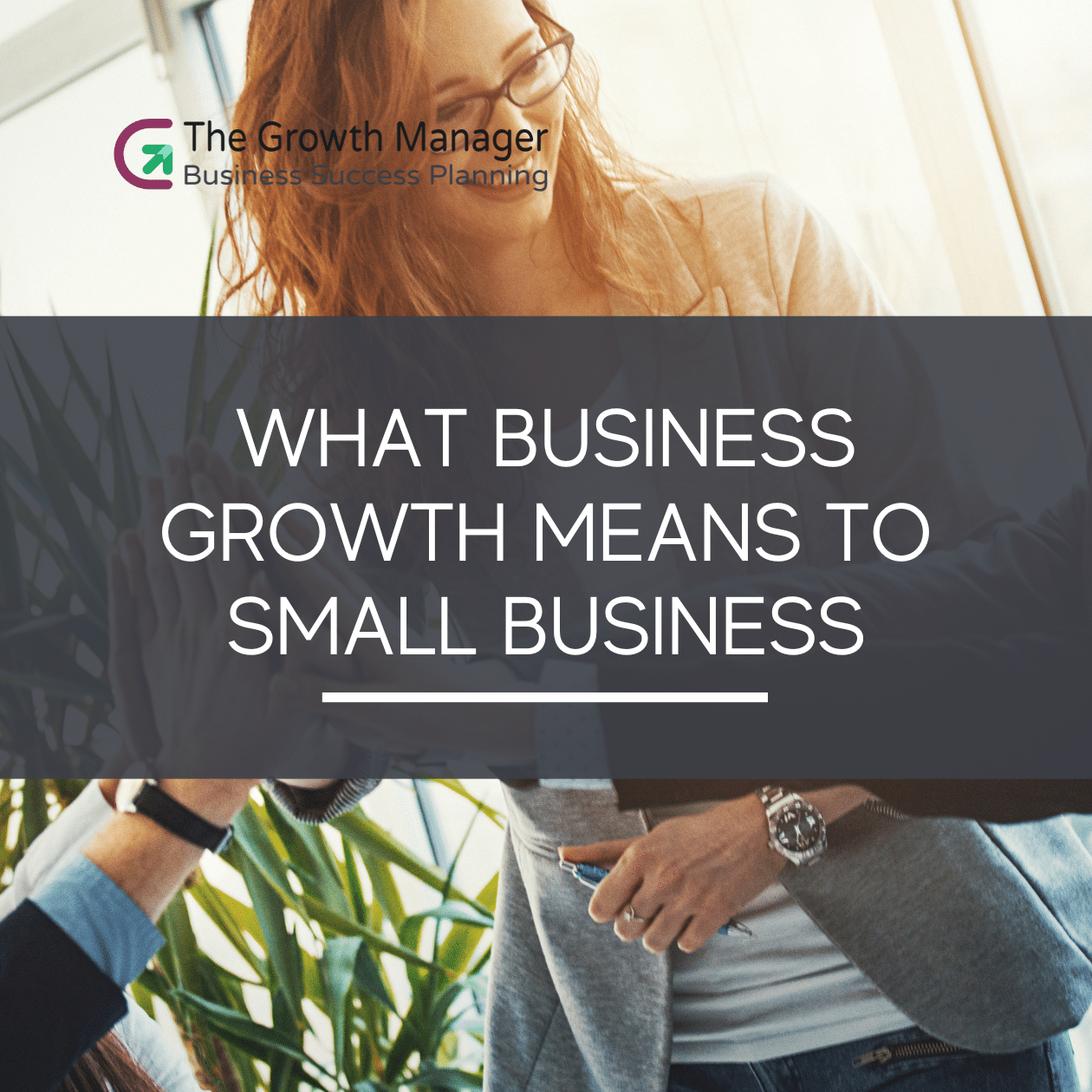The pursuit of growth takes on a distinct significance in the dynamic world of small businesses. They vary widely in size and capacity for growth.
Identifying and categorising the growth patterns of businesses in a systematic way that is beneficial to entrepreneurs seems like a hopeless task. They are characterised by their independence of action, varied organisational structures, and differing management styles.
However, upon closer inspection, it becomes apparent that they experience common problems that come to the surface at similar stages in their development. These points increase our understanding of the unique nature, characteristics, and problems of businesses.
It’s not about expanding size or increasing revenue; it’s a holistic journey that encompasses market presence, customer engagement, innovation, and sustainability. What growth truly means is to address their unique challenges and tap opportunities.
Big or small—businesses are unique, and growth is not a clear highway for everyone. As such, business owners may need inspiration and guidance on their growth journeys with insights and strategies crafted for their specific needs.
 Beyond Revenue and Size.
Beyond Revenue and Size.
The concept of growth is often confined to the narrow parameters of increased revenue and expansion. We challenge this misconception and invite business owners to broaden their perspectives.
Ideal business growth varies by the type of business and industry they are in. It is also important to know at what stage of development the business is at. In general, a healthy growth rate should be sustainable. Unprecedented growth rates may hurt and overwhelm new businesses, which may be unable to keep up with such rapid development.
Businesses looking for holistic growth including market presence, customer expansion, innovation and sustainability require a strategic and multi-faceted approach. The Growth Manager supports a customised plan that takes into account the unique needs and circumstances.
We advocate for tailored strategies that consider the unique needs and circumstances of each small enterprise. Here are actionable insights to guide small businesses on this transformative journey:
Market Presence.
When it comes to small businesses, market presence is everything. It’s an important factor that differentiates one competitor from another, and what may determine whether people will buy from you or go elsewhere.
A company’s market presence measures how well it does in the marketplace. It takes into account factors such as brand identity, brand recognition, customer satisfaction, and price points.
If your goal is to improve your market presence, there are a few things you can do:
- Increase your marketing efforts – Make people aware of your business and what you offer. The more top-of-mind you are, the better your chances of driving sales.
- Focus on quality – When you exceed customer expectations by providing a great product or service, it builds word-of-mouth buzz and provides a cost-effective edge over your competition.
- Stand out from the crowd – Devise a way to differentiate your business from your competition. This could be by offering a unique selling proposition (USP) to an innovative marketing strategy.
- Check your prices – Don’t price yourself out of the market, but don’t be afraid to charge a premium if you offer a high-quality product or service.
- Monitor your progress – Regular monitoring will give you insights into how well you are doing and provide you with the opportunity to adjust your tactics and strategies as needed.
Customer Base Expansion.
It is undeniable that expanding the customer base is a facet of growth, but it’s not entirely about the numbers. It is also about the significance of cultivating a loyal and engaged customer base. Think about building quality relationships that extend beyond transactions that foster brand loyalty and advocacy.
Additionally, it involves the acquisition of new customers and retaining existing ones through exceptional customer service, personalised experiences, and a deep understanding of customer needs.
Innovation.
Small business growth is intricately tied to innovation. It’s about evolution through the introduction of new products or services, and staying ahead of market trends. In this realm, creativity and adaptability are driving forces that make the business relevant and competitive through continuous improvement and creative solutions.
Sustainability.
True growth is sustainable growth. Sustainability is not just a buzzword; it’s a fundamental aspect of growth that ensures the longevity and resilience of a business in the face of evolving challenges.
Sustainable growth can be achieved by adopting business decisions that can provide long-term impact such as implementing eco-friendly practices, supporting local initiatives, and contributing positively to the communities they serve.
By embracing this holistic approach, they can redefine what success looks like and build a foundation for enduring growth.
Overcoming Challenges.
As every business owner knows, the reality exists that there are dozens of issues out there that can affect business growth. But three that may have the greatest impact are limited resources, fierce competition, and the ever-evolving dynamics of the market.
Let’s dive into these common hurdles and explore effective tips for overcoming them.
1. Limited Resources.
Challenge: Compared to their larger counterparts, small businesses often grapple with constrained budgets, limited manpower, and fewer technological resources.
Strategies:
- Identify key areas that require investments and prioritise them. These areas may be technology upgrades or marketing initiatives.
- Consider leveraging external expertise for tasks outside your core competencies. Your team can then focus on strategic initiatives while specialised professionals handle specific functions, optimising resource allocation.
Tips:
- Embrace cost-effective technologies that help streamline operations. Cloud-based tools, automation software, and collaborative platforms can enhance efficiency without the hefty price tag.
- Foster a dynamic and adaptable workforce by cross-training employees to handle multiple roles.
2. Intense Competition.
Challenge: They often find themselves in fiercely competitive landscapes where it is a continuous struggle to stand out.
Strategies:
- Identify a niche market or unique value proposition that can set you apart. Focusing on a specialised area allows you to become an expert and attract a more dedicated customer base.
- Form partnerships with complementary businesses to pool resources for joint marketing efforts. This helps expand your reach and at the same time differentiates your business.
Tips:
- Prioritise the customer experience. A personalised and exceptional customer-centric approach builds customer loyalty, creating a competitive edge based on customer satisfaction.
- Stay vigilant about market trends and your competitors. Continuous market analysis helps you identify opportunities for differentiation.
3. Dynamic Market Dynamics.
Challenge: They are highly susceptible to economic uncertainties, market fluctuations, and changes in consumer behaviour.
Strategies:
- Develop an agile business model that allows for quick adjustments based on market shifts. Being flexible allows you to quickly adapt to changing business conditions promptly.
- Explore opportunities for diversification to spread the risks. This may involve expanding product lines, targeting new customer segments, or entering adjacent markets.
Tips:
- Establish mechanisms for collecting and analysing customer feedback. Real-time insights can guide your adjustments in response to changing market demands.
- Anticipate potential risks by having mitigation plans in place. This proactive approach enables your business to navigate uncertainties with a strategic mindset.
It may seem like a formidable road to growth, but with the right strategies and a proactive mindset, they can be transformed into opportunities.
Tailored Growth Strategies.
Recognising that every business is unique, The Growth Manager excels in providing personalised growth strategies. This takes into account your specific industry, the challenges you face, and your specific goals.
Whether it’s developing sales strategies, exploring digital marketing opportunities, or refining brand messaging, we tailor our guidance to maximise your growth potential.
Unlocking the Unique Potential of Small Businesses.
Each business is as unique as its founder’s vision, there’s no one-size-fits-all endeavour for growth. The Growth Manager recognises this and places a spotlight on the importance of personalised growth strategies.
Let’s delve into why tailored approaches are important for businesses and how we can provide customised solutions to maximise your growth potential.
Importance of Personalized Growth Strategies.
The future of personalisation in growth marketing is exciting, it can be a powerful way to improve the customer experience and drive business growth.
1. Individualised Challenges and Opportunities.
Generic strategies often fail to address the specific challenges and opportunities unique to each business. Tailored strategies, on the other hand, consider these individual nuances, ensuring that growth initiatives are not only effective but are also relevant.
The practice of tailoring the customer experience to meet individual needs, preferences, and interests involves using data and insights to create customised marketing campaigns and communication strategies that resonate with the target audience on a personal level.
2. Alignment with Business Goals.
Business owners often have specific goals and aspirations that go beyond generic benchmarks. Personalised growth strategies align with these individual goals, which include increasing market share, expanding into new territories, or fostering innovation. This alignment ensures that the growth journey is purposeful and directly contributes to the fulfilment of the business owner’s vision.
3. Resources Optimisation.
The purpose of resource optimisation is to maximise productivity by reducing costs of labour and other expenses. It can also help you to improve performance and meet customer requirements better.
Tailored strategies optimise these resources by focusing on initiatives that yield the highest impact. Whether it’s allocating marketing budgets, expanding product lines, or enhancing customer service, a personalised approach ensures that resources are utilised efficiently, maximising the return on investment.
4. Adaptability to Industry Dynamics.
A business’s adaptability has emerged as a crucial trait for success. Whether you’re a startup entrepreneur or a seasoned corporate executive, the ability to adapt makes the difference between thriving and merely surviving.
Adaptability is crucial for staying ahead of trends, understanding customer behaviour, and positioning the business strategically.
How The Growth Manager Provides Customised Solutions.
1. Comprehensive Business Analysis.
We start the process by conducting a thorough analysis. This includes understanding its current market position, identifying strengths and areas for improvement, and assessing the competitive landscape. This comprehensive analysis forms the basis for developing a growth strategy specifically tailored to the company’s environment, aspirations and values of the business owner.
2. Goal-Centric Approach.
We collaborate closely with the business owner to ascertain their long-term vision, short-term objectives and growth milestones. This ensures that the strategies devised are not only effective in promoting growth but also align with the aspirations and values of the business owner.
3. Flexibility and Adaptability.
Since we understand that business landscapes are dynamic, we help craft strategies that are designed to be flexible and iterative. This means that as circumstances change, the growth plan can be adjusted and fine-tuned to stay in harmony with the evolving needs and challenges of the business.
4. Industry-Specific Expertise.
We don’t stop at analysis; we translate insights into actionable plans. These road maps are tailored to the business’s size, industry, and growth stage, providing a step-by-step guide for implementation.
5. Collaborative Decision-Making.
Collaboration is at the heart of the Growth Manager’s approach. We view our customers as partners on the road to growth. Regular consultations, transparent communication and shared decision-making ensure that the growth strategy is developed and not imposed.
In essence, our prowess lies in our ability to go beyond cookie-cutter solutions. To us, businesses are not just clients; they are unique entities with distinctive stories, challenges, and potentials. By tailoring strategies that recognise and amplify this uniqueness, we aim to empower businesses to not only grow but to flourish in their own, distinctive ways.
Measuring Success.
Measuring and tracking growth success for small enterprises involves adopting a holistic approach considering various dimensions critical to sustainable development. Beyond the numerical figures, success is about building meaningful relationships, fostering innovation, and contributing positively to the community.
Beyond Traditional Metrics.
Traditional metrics like revenue growth and market share provide valuable insights, but a comprehensive assessment of success goes deeper. Qualitative factors such as brand reputation, customer satisfaction, and employee engagement. We understand the importance of looking beyond the balance sheet to understand the overall health and resilience of the business.
Success can manifest as positive customer reviews, increased brand loyalty, or a thriving workplace culture—all of which contribute significantly to the long-term prosperity of a business.
Relevant Key Performance Indicators (KPIs).
For an accurate assessment of success, there’s a need to identify and track key performance indicators (KPIs) tailored for small businesses. KPIs should align with the specific goals and nature of the business, providing meaningful insights into its performance.
For example, relevant KPIs to look out for that can offer valuable perspectives on customer relationships and market impact are:
- Customer Acquisition Cost (CAC) – Evaluate the cost associated with acquiring a new customer. This helps in assessing the efficiency and effectiveness of marketing and sales strategies.
- Customer Lifetime Value (CLV) – Determine the total revenue a business can expect from a customer throughout their entire relationship. By understanding customer acquisition and retention values, companies can gain an understanding of their long-term value.
- Net Promoter Score (NPS) – Measure customer satisfaction and loyalty by asking customers how likely they are to recommend the business to others. NPS provides insights into overall customer sentiment.
Additionally, employee productivity, innovation rate, and sustainability metrics contribute to a comprehensive understanding of success. We collaborate with business owners to define KPIs that go beyond the obvious, offering a nuanced perspective on growth that considers both quantitative and qualitative factors.
Conclusion.
The essence of growth for small enterprises is about achieving sustainable success on multiple fronts. It’s a journey that involves strategic decisions, overcoming challenges, and seizing opportunities.
We are ready to be your partner on this journey, providing tailored insights and solutions for businesses. Learn how our expertise can redefine and elevate your growth story so that success becomes more than just a goal, but an ongoing journey to success.
Are you ready to redefine your business growth? Visit The Growth Manager today to learn how our expertise can help you define and achieve meaningful, sustainable growth.





